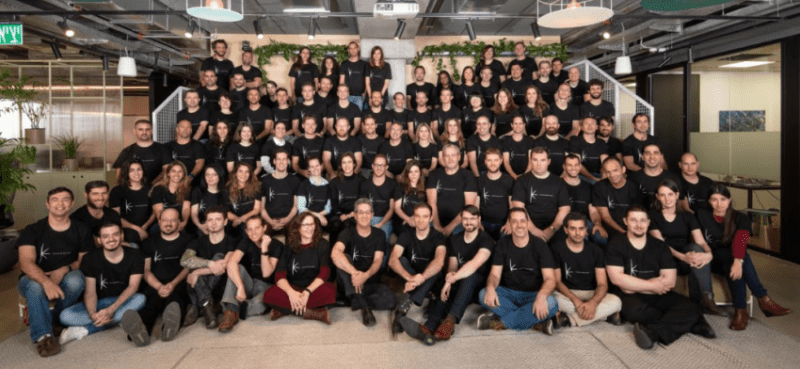Open innovation is a term coined by Henry Chesbrough in his 2003 book, “Open Innovation: The new imperative for creating and profiting from technology”. Open Innovation assumes that valuable ideas can come from inside or out of the company and can go to the market from inside or outside the company as well. At the heart of the open paradigm is the assumption that enterprises cannot conduct all R&D activities by themselves; instead, they have to capitalize on external knowledge.
For example, in 2000, Procter and Gamble (P&G) faced several major difficulties: an increased pace of innovation, higher costs, constrained resources and growing consumer demands had all made certain elements in P&G’s traditional research and development (R&D) model obsolete. The company required a “growth rate which exceeded the industry growth rate”. This required collaboration with external elements; or in other words: Open Innovation. This initiative was dubbed Connect and Develop where the company collaborated with external sources for innovative ideas and technologies. When the process began some 10-15% of the innovations at P&G included ideas from external sources, and this increased to about 50% in under a decade.
There are clear advantages of exercising Open Innovation practices: reduction in the time and cost of innovation projects; incorporation of solutions and innovations which would have never been internally generated, due to lack of time, knowledge and resources; and commercialization of inventions which for various reasons cannot be achieved by the company owning them. At the same time however, Open Innovation has its own challenges: managing intellectual property issues and other legal risks; processing ideas quickly, and efficiently; and establishing an efficient internal structure that supports and facilitates Open Innovation.
Over the years I have followed closely many companies that provide open innovation services and platforms; and it seems that the market in buzzing. The Innovation Management Market is projected to grow to $1.5 Billion by 2022, at a Compound Annual Growth Rate (CAGR) of 29.2% during the period 2017-2022.
The BOLD Awards 2019 has a category for the Boldest Innovator, sponsored  by Surcle, which is itself an open innovation platform that evolved from a eureka moment breakthrough at an online supply chain for electronic components. They can now provide their clients with access to a global network of both professional and citizen scientists to tackle their issues and devise novel solutions.
by Surcle, which is itself an open innovation platform that evolved from a eureka moment breakthrough at an online supply chain for electronic components. They can now provide their clients with access to a global network of both professional and citizen scientists to tackle their issues and devise novel solutions.
There’s a company that recently caught my eye, and if it was just a little bit younger maybe its founders would have entered: SparkBeyond. Established in 2013, the company’s platform is designed to tackle the cognitive bottleneck and bias inherent in human thinking, augment data with a multitude of external data sources, and enable adaptive AI systems. Their platform discovers complex patterns, identifies root causes and drivers of business outcomes.
By leveraging their Knowledge Mining capabilities they are enabling companies to deepen the scope of their R&D, expand into the long tail of factors affecting the problem, reduce researchers’ efforts, and identify technological breakthroughs. On top of their sophisticated AI mechanisms, they harness humanity’s collective intelligence to generate millions of insights and empower organizations with strategic and operational intelligence for maximal impact.

Moving forward, SparkBeyond is creating its “Invention Machine”, which analyzes millions of inventions to create a stream of thousands of new directions for inventions, which would be further refined and enriched through a dynamic crowd-sourced process.
What I really like about SparkBeyond is that in addition to business impact, they are committed to generating social impact on a planetary scale. An exciting project that has come to my attention that has been driven by some standout people: SparkBeyond partnered with a leading HMO to analyze one of the world’s largest and richest EMRs – in order to improve early disease and high-risk state detection.
The current research paradigm fails to address clinical research needs due to a number of factors: the ever-growing volume and complexity of data; time-consuming data construction; human bias in defining the hypotheses space; the high cost of error (so research remains in the comfort zone); and the skillset gap between clinical experts and data analysis.
By combining medical expertise with machine intelligence, the problem-solving platform discovered that a reduction in hemoglobin levels over time was a high contributor in identifying patients at risk for Colon cancer. The result: in a very short time, the platform generated a lift of 13x in identifying patients at risk for Colon cancer, among the top 1% of the at-risk population. Now that’s what I call impact!
Chesbrough argues – and I agree – that the future of Open Innovation is more extensive, more collaborative, and more engaged with a wider variety of participants. But to that I would add that the future of open innovation is within the development of AI-based tools that enhance the ability of individuals, groups and organizations to reach a deeper level of research and analysis, thus improving decision-making processes.
The combination of human crowds and sophisticated machines will enable organizations to acquire real-time understanding of previously obscured connections and relationships and to use artificial intelligence to point research in the right direction. Such tools will be the ultimate analytic resources for creating synergy between data-information knowledge, software-hardware and human experts. Put differently, the next generation of open innovation will be based on leveraging humanity’s collective intelligence to augment AI-generated solutions and vice-versa.
Author: Dr Shay Hershkovitz
Have you voted yet for your Boldest Innovator? The time for submitting entries to the BOLD Awards 2019 has closed and right now we are in a public voting phase until February 20. After this an international panel of judges with specific category knowledge will become involved to decide the winners in 12 categories. Be involved and vote now for your favourite projects. You can also apply to attend the gala dinner award ceremony in Venice, Italy, on April 5.






